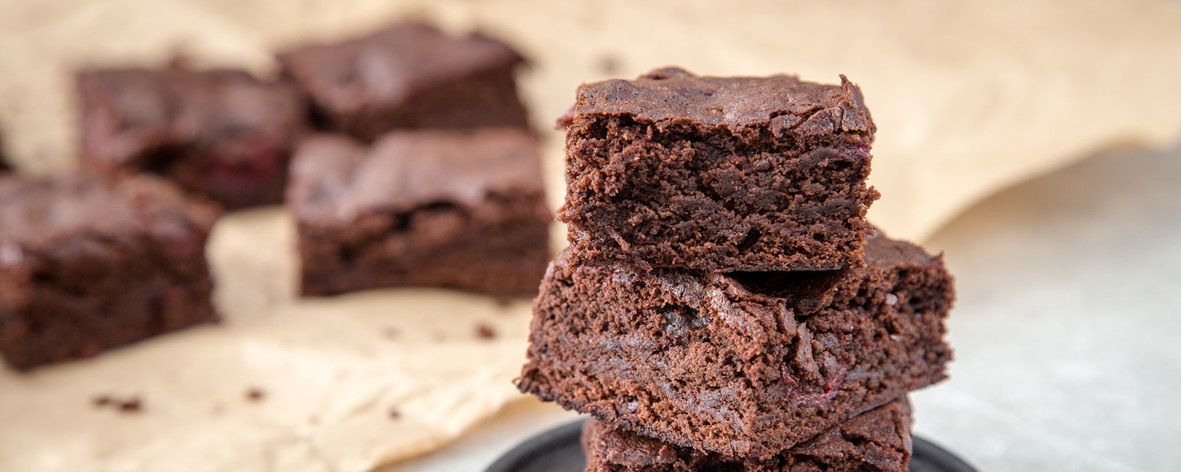Brownie baking 101 … how to create the perfect brownie for you

I’m yet to meet a person who doesn’t like brownies, but they can be a little contentious. How can a brownie be contentious you ask? Well it comes down to this question … should brownies be gooey, fudgy, cakey or crumbly? Ask that question and you’re guaranteed to get a whole range of opinions on the perfect brownie texture. The good news is that brownies are super-simple to make and if you know what you like you can look for recipes, or even adjust them, to suit your preferred brownie taste and texture.
Brownies are made using the same basic ingredients – flour, chocolate, sugar, eggs and fat, but the quantities of each will make a big difference to the end result. Let’s look at each of these ingredients a little more:
Flour – Put simply the more flour in your recipe, the cakier the brownie will be. So if you like fudgy brownies, use less flour. Brownies should always use plain flour unless a recipe specifically says otherwise.
Chocolate – You’ll find brownie recipes that use melted chocolate, others with cocoa powder and some that use both. Fudgy brownies are usually made with melted chocolate, whereas cakey brownies use cocoa powder. If you’re a chewy brownie fan, you’ll want a combination of both melted chocolate and a little cocoa powder.
Sugar – High ratios of sugar lead to a softer brownie on the inside while using some brown sugar in your recipe can create a more moist and chewy brownie.
Eggs – In most brownie recipes eggs are the only raising agent used so they have an important role to play in the texture. Chewy brownies have less egg than fudgy brownies. Most cakey brownie recipes use additional raising agents like baking powder to create the classic cakey crumb.
Fat – Butter and oil are the two fats used most commonly in brownies. Oil is the best choice for fudgy brownies while butter is best for cakey brownies.
Apart from the ingredients, there are a few more tricks to creating your perfect brownie. Make sure if you are melting chocolate for your brownies that you allow it to cool a little before adding the other ingredients. The ideal temperature is around 37C (body temperature) as this will be warm enough to dissolve the sugar but not hot enough to scramble the eggs.
Cakey brownie recipes often use a creaming method for the eggs and sugar, so you will need an electric mixer for those. Other brownies can be mixed by hand with a wooden spoon. Always line the tin or dish that you are cooking the brownies in with baking paper, and leave an overhang of baking paper on the sides to make taking the brownies out of the tin a breeze.
Once you’ve got your brownies in the oven keep a close eye on them. They do tend to continue cooking once they have come out of the oven so you are best to take them out a little before you think they are ready. To test if they are ready, insert a skewer into them. You are looking for crumbs on the skewer. If the skewer comes out gooey it means they’re not quite ready, and if it comes out clean then they’re overcooked.
Finally, resist the temptation to cut your brownies before they are fully cooled. The chocolate inside will firm up as they cool and you will get a much better cut if you wait.

